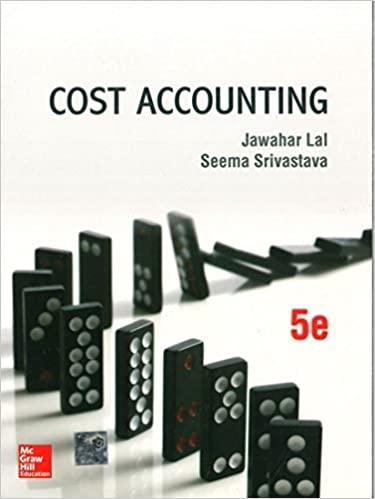Answered step by step
Verified Expert Solution
Question
1 Approved Answer
Weighted average cost method with perpetual inventory The beginning inventory at Midnight Supplies and data on purchases and sales for a three - month period
Weighted average cost method with perpetual inventory
The beginning inventory at Midnight Supplies and data on purchases and sales for a threemonth period ending March are as follows:
Date Transaction Number
of Units Per Unit Total
Jan. Inventory $ $
Jan. Purchase
Jan. Sale
Jan. Sale
Feb. Sale
Feb. Purchase
Feb. Sale
Feb. Sale
Mar. Purchase
Mar. Sale
Mar. Purchase
Mar. Sale
Required:
Record the inventory, purchases, and cost of goods sold data in a perpetual inventory record similar to the one illustrated in Exhibit using the weighted average cost method. Round unit cost to two decimal places, if necessary. Round all total cost amounts to the nearest dollar.
Date Purchases
Quantity Purchases
Unit Cost Purchases
Total Cost Cost of
Goods Sold
Quantity Cost of
Goods Sold
Unit Cost Cost of
Goods Sold
Total Cost Inventory
Quantity Inventory
Unit Cost Inventory
Total Cost
Jan. fill in the blank
$fill in the blank
$fill in the blank
Jan. fill in the blank
$fill in the blank
$fill in the blank
fill in the blank
fill in the blank
fill in the blank
Jan. fill in the blank
$fill in the blank
$fill in the blank
fill in the blank
fill in the blank
fill in the blank
Jan. fill in the blank
fill in the blank
fill in the blank
fill in the blank
fill in the blank
fill in the blank
Feb. fill in the blank
fill in the blank
fill in the blank
fill in the blank
fill in the blank
fill in the blank
Feb. fill in the blank
fill in the blank
fill in the blank
fill in the blank
fill in the blank
fill in the blank
Feb. fill in the blank
fill in the blank
fill in the blank
fill in the blank
fill in the blank
fill in the blank
Feb. fill in the blank
fill in the blank
fill in the blank
fill in the blank
fill in the blank
fill in the blank
Mar. fill in the blank
fill in the blank
fill in the blank
fill in the blank
fill in the blank
fill in the blank
Mar. fill in the blank
fill in the blank
fill in the blank
fill in the blank
fill in the blank
fill in the blank
Mar. fill in the blank
fill in the blank
fill in the blank
fill in the blank
fill in the blank
fill in the blank
Mar. fill in the blank
fill in the blank
fill in the blank
fill in the blank
fill in the blank
fill in the blank
Mar. Balances $fill in the blank
$fill in the blank
Determine the total sales, the total cost of goods sold, and the gross profit from sales for the period.
Line Item Description Amount
Total sales $fill in the blank
Total cost of goods sold $fill in the blank
Gross profit $fill in the blank
Determine the ending inventory cost as of March
fill in the blank of $
Step by Step Solution
There are 3 Steps involved in it
Step: 1

Get Instant Access to Expert-Tailored Solutions
See step-by-step solutions with expert insights and AI powered tools for academic success
Step: 2

Step: 3

Ace Your Homework with AI
Get the answers you need in no time with our AI-driven, step-by-step assistance
Get Started


